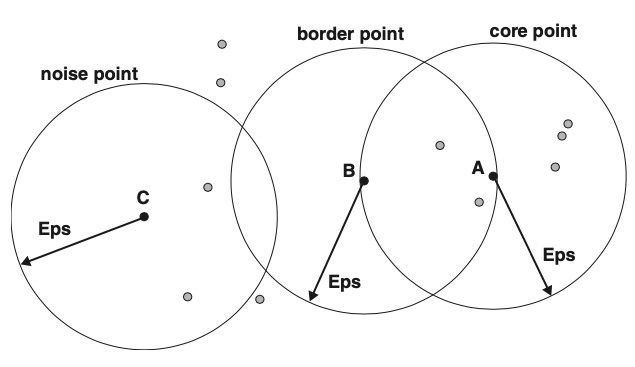DBSCAN
Summarized notes from Introduction to Data Mining (Int'l ed), Chapter 5, section 4
Unsupervised learning > clustering
-
density-based clustering located regions of high density, separated from others by regions of low density
-
DBSCAN is based on center-based approach: count number of points within radius, of a selected central point
-
Data points are classified in 3 categories:
-
core points: inside the interior of density-based cluster; point is a core point if there are at least
-
border-points: non-core points within the neighborhood of core point; border point can be inside the neighborhood of several core points
-
noise points: points that are neither core or border points
-
-
DBSCAN produces partial clustering solution
Categories of points

Pseudo code
1 2 3 4 5 6 | |
Choosing parameters
-
For
- for points that belong to cluster, the distance will be small if k is not larger than cluster size
-
compute distance for all data points for some
- distance increases sharply at suitable
- use k as
- distance increases sharply at suitable
-
if
-
if
-
original DBSCAN used value
Analysis
Complexity
| Time | |
| Time, min | |
| Time, max | |
| Space |
Advantages
- resistant to noise
- can handle clusters of varying shapes and sizes => can find clusters not discoverable with K-means
Limitations
-
algorithm will have issues, if cluster densities vary widely
-
high-dimensionallity: difficult to define density for such data
-
computation can become expensive if dimensionality is high